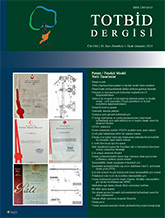
The frequency of hip fractures is increasing due to the rapid population growth in the world and the prolonged life expectancy. Hip fracture is closely related to mortality, especially in elderly patients. The main purpose of hip fracture treatment is to provide the patient with a painless and functional extremity. Hip fractures can be examined in two groups as extracapsular and intracapsular fractures. Intracapsular fractures are proximal femoral fractures located in the area between the femoral head and trochanter. Osteosynthesis may be the first choice in elderly nondisplaced or minimally displaced femoral neck fracture. First-choice osteosynthesis may be preferred treatment method in patients under 70 years of age in displaced fractures. In patients over 70 years of age, the treatment decision between osteosynthesis or arthroplasty should be evaluated considering factors such as the presence of hip arthrosis, delayed fractures, presence of avascular necrosis in the femoral head, the general condition of the patient, difficulties in receiving anesthesia and the need for early mobilization. The aim in extracapsular femur proximal fractures is to achieve stable fixation that enables early mobilization of the patient. In elderly patients with stable intertrochanteric fractures, primarily recommended treatment is osteosynthesis. Hemiarthroplasty is recommended as the first choice in a selected subgroup of patients with ipsilateral hip arthrosis, ipsilateral avascular necrosis of the femoral head, inflammatory arthritis, unstable fracture pattern with poor bone quality, neglected fractures, and unsuccessful internal fixation. Osteosynthesis should be preferred as the first treatment method in all cases except those listed. In preoperative planning, operating room conditions, traction table, the presence of trained stuff, the features of the existing implants and application sets and the surgeon`s experience are of fundamental importance. As a result, considering the prolonged lifetime and increasing comfort expectations in elderly hip fractures, the primary treatment choice emerges as methods that allow the patient to use his own hip.